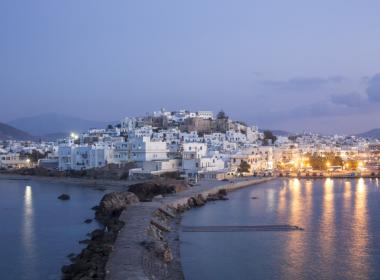
Chora is the capital city of Naxos. It is the administrative, commercial and tourist center of Naxos. It is also the central port of the island. It is built in the location of the ancient city, in the middle of the western coast of the island.

The small village of Damalas, spread in amphitheatric fashion at the foot of Lagos hill in the valley of Tragea, is visible from many other locations on the island and offers fantastic views.
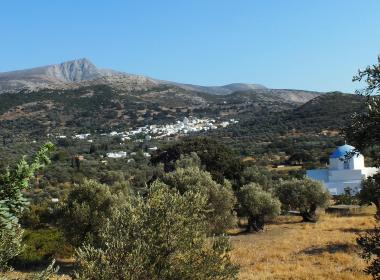
Situated on the southern side of the olive groves in the Tragea basin, the picturesque village of Damarionas, with its mansions, whitewashed houses and alleyways, churches in the authentic Cycladic style and pretty squares, has been officially designated as a traditional settlement.
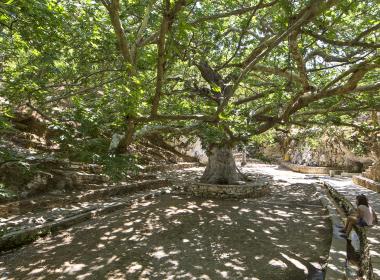
The village of Danakos is a small picturesque village situated deep in a gorge at the foot of Mt. Zas, on Naxos’s eastern side.
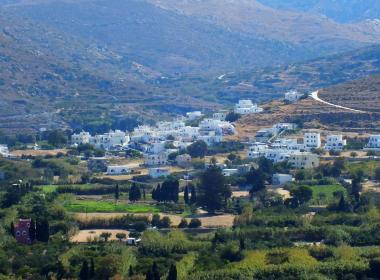
Eggares is a small farming village in the midst of a fertile plain still bearing the marks of blissful times that left an indelible impression on prominent writer Nikos Kazantzakis in his teens, at the end of the 19th century.
Economically and culturally vibrant, the village of Filoti is the largest of all Naxian villages.
The village of Galanado on Naxos, which is built in amphitheatric fashion and with views of the lush valley of Livadi and of Chora further beyond, is said to derive its name from the French word galant, meaning ‘gentlemanly’ and ‘courteous’ –probably the reflection of a noble past associated with
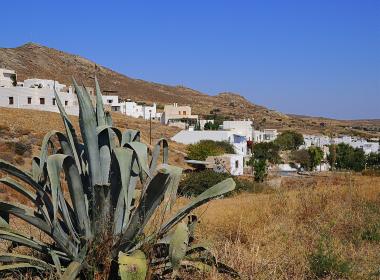
Galini is a small farming village on Naxos built in amphitheatric fashion on the western side of the Eggares valley, with pretty houses and well-tended flower gardens.
The village of Glinado on Naxos is a farming village, one the three that share the fertile Livadi valley –the largest of the island in its southwest and after which they are collectively named as Livadochoria.

The small settlement of Kadis Village on Naxos is situated south of the village of Keramoti, on the hill of Vouno. Its name is derived from the Turkish word (of Arab origin) for “judge” (“qadi”). It is said that a court existed here during Ottoman times.
